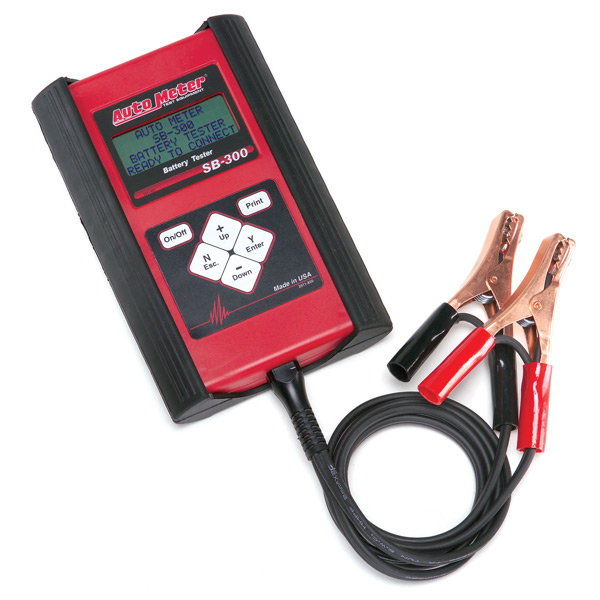Dodge Ram 2009-Present: Why Won't My Truck Start?
It does not get much worse than needing to go somewhere, but your truck will not start. The Dodge Ram 1500 is a sophisticated machine with an abundance of electronic gizmos; however, inspecting some traditional components may prove fruitful in getting your truck's engine fired up.
This article applies to the 4th generation Dodge Ram (2009-Present).
With moderns vehicles using a variety of electronic sensors and computers, diagnosing a no-start condition is not as easy for an individual as it once was. That being said, there are still a few basic rules to follow that can uncover the potential issue behind your engine's failure to start. For any gasoline engine to run, it needs adequate air and fuel that must be compressed and ignited by a precisely timed spark. To start the engine, a good supply of battery voltage is needed to energize the high torque starter motor to rotate the engine fast enough for the previously mentioned process to occur. Taking this process into account, inspecting battery voltage and power to all systems (as well as the presence of spark and fuel) will go a long way in diagnosing the potential cause that is keeping your engine from starting. That being said, there are some intricate sensors and modules that can go bad and prevent your truck from firing up. This article will outline some basic steps to follow in order to get your Dodge Ram 1500 back up and running.

Materials Needed
- Battery tester
- Spark tester
- Spark plug wrench
- Ratchet, sockets, and wrenches
Step 1 – Check battery
The most common issue related to a no-start condition in any vehicle is a dead battery. A bad battery will prevent the starter motor from cranking the engine over. A quick measurement of the available battery voltage can be seen on the dash with the key in the "on" position. A battery in good condition will typically display 12 volts on the dash gauge, whereas a low battery may read 11 volts or lower. If the battery is extremely low or completely dead, no power will be available and none of the truck's electronics will work. Be sure to check all battery connections because something as simple as a loose ground wire can prevent the truck from cranking. If you have a battery tester, make sure the battery is fully charged before placing a load on it. Similarly, any local auto parts store will usually test a battery for free. Sometimes, a battery that initially seems good will fall short when a load is placed on it and should be replaced. If the battery turns out to be bad after charging or load testing, replaced it and reattempt to start the truck.

If the truck fails to crank with a freshly charged or new battery, the issue likely lies with the Wireless Ignition Node (WIN). Dodge/Chrysler has several service bulletins and recalls regarding the WIN. In most cases, owners simply have the dealership install updated software to cure the problem. If you have been having issues with your key fob not working or getting stuck in the ignition, replacement the WIN and key fobs may be required to restore starter functionality.

Pro Tip
If you have recently had a dead battery, be sure to inspect for any interior accessories that may be drawing juice. Any accessory left on for an extended period of time has the potential to drain the battery to a point where it will not provide sufficient power to crank the truck.
(Related Article: How to Jump Start Battery - DodgeForum.com)
If the truck will crank but not start, proceed to Step 2.
Step 2 – Check fuses
If the engine cranks but will not fire, it is a good idea to have a look at the fuses. A blown fuse, especially one related to the fuel or ignition systems, will not allow the engine to run. The fuses are located in what Dodge calls the "Totally Integrated Power Module" next to the battery in the engine compartment. This module contains both mini fuses and cartridge-type fuses. A diagram and fuse chart should be located on the underside of the module cover, but can also be found in the owner's manual. A thorough examination of the fuses can be a quick way to restore function to your truck. With such sophisticated electronics in the modern Ram, owners have reported that a simple blown fuse related to the door's locks and ignition system was causing their no-start issues. Be sure to check all fuses, as a fuse that is seemingly unrelated to engine functionality may be preventing it from starting.

Pro Tip
It is a good idea to inspect the components related to a blown fuse, as it may be an indication of a faulty part or electrical short.
If all fuses check out okay, proceed to Step 3.
Step 3 – Check for spark
In order for an engine to run, it must have spark to ignite the air-fuel mixture. Instead of using a single ignition coil and distributor like the vehicles of the past, the modern Ram uses individual coil packs for each cylinder. An easy way to test for spark is to remove a coil pack from the engine and connect it to an extra spark plug or a spark tester tool before having a friend crank the engine. Have the loose coil pack/spark plug resting on a safe surface in the engine bay because holding it can result in you getting shocked. While cranking the engine, voltage should be visible as it jumps across the spark plug electrode. If no spark is present, the engine is unable to complete the combustion process and will not run. On modern vehicles, a lack of spark is usually caused by a bad crankshaft position sensor. Similar to the function of a distributor, the crankshaft position sensor informs the powertrain control module (PCM) of the engine's current position in order to correctly time the spark for each cylinder. If the sensor goes bad, the PCM will prevent spark from occurring because un-timed ignition can be detrimental to the engine.

If spark is present, proceed to Step 4.
Step 4 – Check for fuel
If fuel is not making its way to the injector rail, fuel cannot enter the cylinders and complete the combustion process. When the key is turned to the "on" position, the fuel pump should audibly energize to produce fuel pressure. Unfortunately, modern trucks have eliminated the Schrader valve to test fuel pressure at the fuel rail and require special diagnostic software to determine the presence of fuel electronically. On another note, a lack of fuel pressure can be caused by a restricted fuel filter, but in similar fashion, Dodge has packaged this together with their fuel pump that is located inside the fuel tank and is typically not serviceable. That being said, many owners who have spark and are still experiencing a no-start condition have replaced their fuel pumps to cure their starting problems. A previously noisy or humming fuel pump is often an indication of a pump failure. Also, if the truck was run out of fuel, the pump can become damaged and need replacement.

Pro Tip
After cranking the engine, removal of a spark plug can help indicate the presence of fuel. A wet spark plug that smells of fuel will indicate fuel is being injected into the cylinders, and is most likely not the cause of your starting issues.
Related Discussions
- Help!!! Ran Out of Gas, Now Truck Wont Start - DodgeForum.com
- Truck Won't Start, Dashlights Stay Lit After Key is Removed - DodgeForum.com
- Key Fob Won't Turn 2010 Ram- DodgeForum.com






